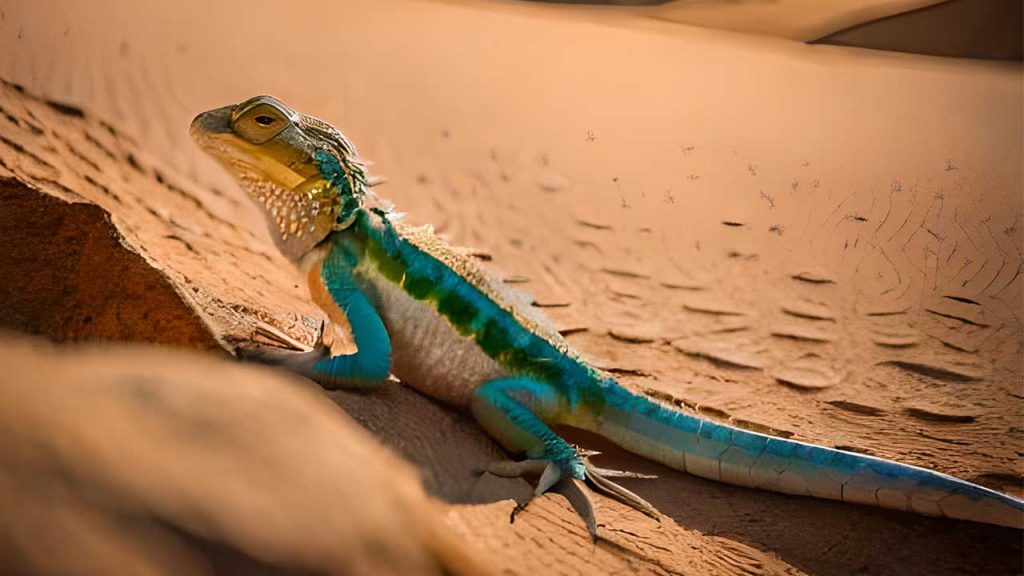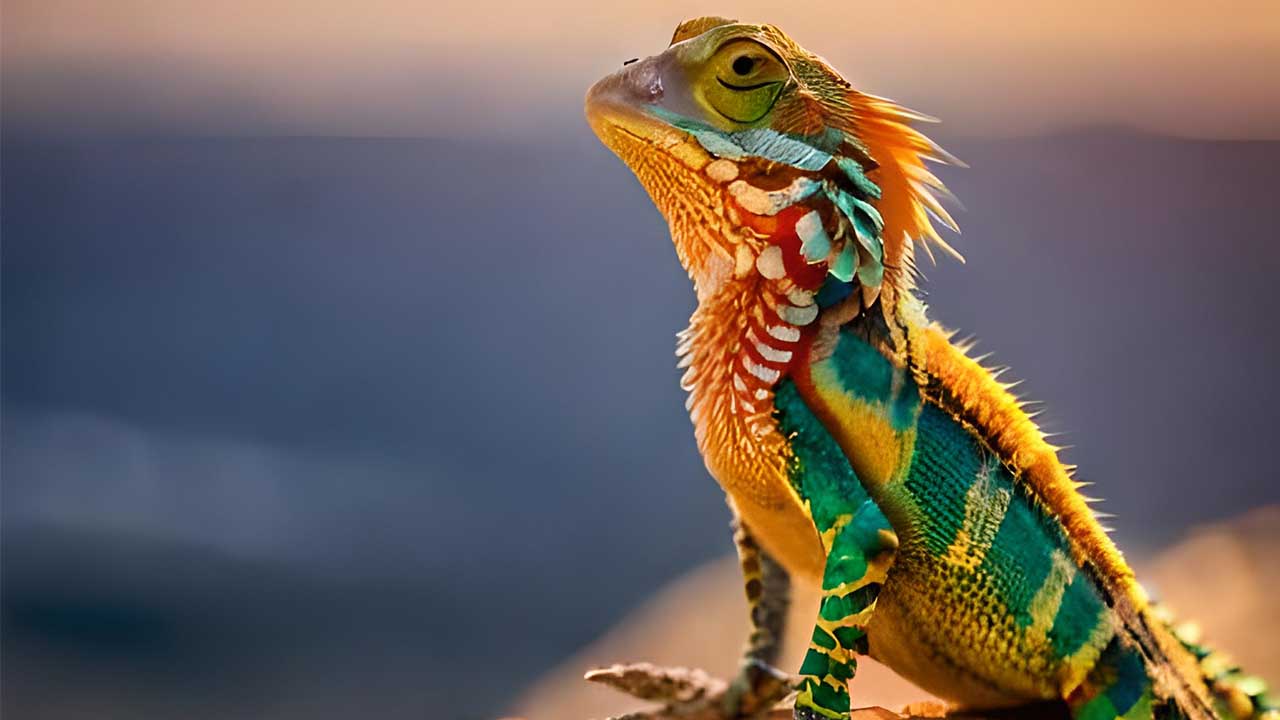Collared lizards, scientifically known as Crotaphytus collaris, are fascinating reptiles that inhabit arid regions of North America. With their vibrant colors and unique behaviors, they are often sought after as pets by reptile enthusiasts. However, despite their allure, collared lizards are not well-suited for captivity. In this article, we will explore the reasons why these lizards don’t thrive in captivity and the challenges they face in an artificial environment.
Contents
- 1 Introduction
- 2 Natural Habitat and Behavior of Collared Lizards
- 3 Dietary Needs and Feeding Challenges
- 4 Temperature and Humidity Requirements
- 5 Space and Enclosure Size
- 6 Stress and Social Interaction
- 7 Difficulties in Reproduction
- 8 Potential Health Issues
- 9 Legal and Ethical Considerations
- 10 Conclusion
- 11 FAQs
Introduction
Collared lizards are native to the southwestern United States and northern Mexico. They are semi-arboreal reptiles that inhabit rocky terrains, desert areas, and open grasslands. These lizards are diurnal and rely on the sun’s warmth to regulate their body temperature. In captivity, replicating their natural environment can be challenging, leading to various issues that affect their health and well-being.
Natural Habitat and Behavior of Collared Lizards
In their natural habitat, collared lizards have a vast range to explore and bask in the sun. They are agile climbers and spend a significant amount of time on rocks and trees. Captive environments often fail to provide the same level of stimulation and space, leading to stress and decreased activity levels. Insufficient physical activity can result in obesity, muscle weakness, and overall poor health.
Dietary Needs and Feeding Challenges
Collared lizards are insectivores, and their diet primarily consists of various insects, including crickets, grasshoppers, and beetles. Providing a diverse and nutritionally balanced diet can be challenging in captivity. Many pet owners struggle to replicate the natural prey availability, which can lead to nutritional deficiencies and health problems in the lizards. Additionally, some captive lizards may have difficulties recognizing or accepting commercially available food items.
Temperature and Humidity Requirements
Maintaining the appropriate temperature and humidity levels is crucial for the health and well-being of collared lizards. In their natural habitat, they have access to a wide range of temperatures, allowing them to regulate their body temperature effectively. Captive environments often struggle to provide a suitable thermal gradient, resulting in inadequate thermoregulation for the lizards. Insufficient humidity levels can also lead to dehydration and shedding problems.
Space and Enclosure Size
Collared lizards require spacious enclosures that allow for both horizontal and vertical movement. In captivity, providing adequate space can be challenging, especially for adult lizards that require larger enclosures. Insufficient space can lead to stress, limited exercise, and even territorial disputes if multiple lizards are housed together. Additionally, the enclosure should have suitable hiding spots and basking areas to replicate their natural habitat accurately.
Stress and Social Interaction
Collared lizards are solitary reptiles and do not require social interaction with conspecifics. In captivity, placing multiple lizards together can result in territorial behavior and stress. Furthermore, the presence of other pets or frequent human handling can also cause stress and anxiety in collared lizards, leading to health issues and decreased lifespan.
Difficulties in Reproduction
Breeding collared lizards in captivity is challenging and often unsuccessful. It requires meticulous attention to temperature, humidity, and photoperiod, mimicking the natural seasonal variations. Additionally, providing suitable nesting sites and monitoring the female’s health throughout the reproductive process can be demanding. Due to these complexities, breeding collared lizards is best left to experienced reptile breeders.
Potential Health Issues
Collared lizards are susceptible to various health issues in captivity. The lack of UVB lighting can lead to metabolic bone disease and calcium deficiencies, resulting in weak bones and deformities. Poor diet and inadequate habitat conditions can also contribute to a weakened immune system, making the lizards more susceptible to infections and diseases.
Legal and Ethical Considerations
Another aspect to consider is the legality and ethical implications of keeping collared lizards as pets. Some jurisdictions have strict regulations regarding the capture, trade, and possession of native wildlife. It is essential to research and comply with local laws and ensure that obtaining a collared lizard as a pet is legal and does not contribute to the illegal wildlife trade.

Conclusion
While collared lizards may seem like captivating pets, their complex needs and specific habitat requirements make them unsuitable for most captive environments. From dietary challenges to temperature and space requirements, these lizards face significant hurdles in captivity. It is crucial to prioritize the well-being and conservation of these fascinating reptiles and appreciate them in their natural habitats.
FAQs
1. Can I keep a collared lizard as a pet if I meet all the requirements?
While it is technically possible to keep a collared lizard as a pet if you can adequately replicate its natural habitat, it is not recommended for most individuals due to the challenges involved and the specialized care they require.
2. Are there any alternative reptiles that are better suited for captivity?
Yes, there are several reptiles that are more adaptable to captive environments, such as leopard geckos, bearded dragons, and corn snakes. These species have specific care requirements but are generally easier to maintain in captivity.
3. How long do collared lizards live in the wild?
Collared lizards have an average lifespan of 5 to 8 years in the wild, but some individuals may live up to 10 years or more under optimal conditions.
4. Can collared lizards be bred in captivity successfully?
Breeding collared lizards in captivity can be challenging and often requires specialized knowledge and experience. It is not recommended for beginners or inexperienced reptile enthusiasts.
5. Are there any conservation efforts in place to protect collared lizards?
Yes, there are conservation programs and organizations dedicated to protecting collared lizards and their habitats. These initiatives aim to preserve their populations and raise awareness about their importance in the ecosystem.


